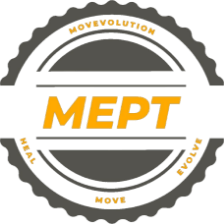Treating folks, like you, who move for a living and love to move

Blogs

Author: Richard Symister
Defining Fitness and the 4C'sWhat Does Physical Fitness Mean to You and the 4 C’s of Physical Fitness
When trying to define physical fitness to my patients and clients, I came to a few conclusions:
Communication and comprehension are both key components to the success of my client’s performance. But being bogged down with finding the absolute, perfect definition of “physical fitness” (a malleable term that will most likely evolve with time) is less important to me than explaining the rationale behind the why and how we test individual physical fitness.
Dr.Bo and I dig a bit deeper in Part 2 of our Defining Fitness podcast We discuss the primary components of physical fitness and why they are important. Listen to full MovEvolution Heal, Move & Evolve PODCAST on ITunes or Spotify!
There are a few keywords that should be included in our definition that simplify, but specify my ultimate goals of training for physical fitness: capacity, work and injury. So, for now, I am sticking with the definition of physical fitness, the capacity to perform work without injury.
Hopefully you’ll see how this definition can apply to anyone — the runner, dancer, drummer, Crossfitter, construction worker — anyone who moves and breathes.
I can now break physical fitness down to its bare bones, the essential components which I call them the 4 C’s of Physical Fitness.

1. Competency (of movement)
These movements include infant developmental milestones (e.g. rolling, crawling, head control, the ability to sit up, stabilize the trunk in high and half kneeling positions and the ability to find one’s center of gravity on two, and eventually, one foot.)
Later in childhood, we develop further competency with fundamental movements, manipulating our bodies as well as objects (e.g. squat, lunge, carry/climb, push/press, run, kick, swing).
Form, technique and skill in both developmental milestones and fundamental movements are naturally (but not always) mastered or significantly improved during infancy and early childhood, respectively. Deficits in either one of these areas can lead to movement compensation.
2. Confidence (with movement)
As our bodies gain more control, balance and strength, we gradually start to increase it’s load, ask it to go faster, cut in different directions, produce more power and to adapt to the new “stresses” placed upon it. In our particular, individualized activity (work, sport, play) we develop increased skill and, therefore, confidence.

3. Capacity (to perform movement)
Can you do more work? Can you do it for extended durations? Can you lift more weight, bike longer, dance 3 shows in one week, maintain an 8 minute mile, tolerate being on your feet, lecturing the entire day?

As the individual gains increased skill and mastery in a specific sport or activity, we want to see an increase in tolerance or capacity to perform more work within a certain amount of time. Capacity has a lot to do with repetition, adaptation and durability.
4. Comprehension (of why we perform movement)
A program without full client knowledge and understanding is only a partial program! I’m not only referring to understanding how to lift, run or balance on one leg. As a therapist, coach and educator, I need to be sure my client fully comprehends what physical fitness individually means to her and how to maintain a fit lifestyle.

Rest and recovery. Appropriate loading. Age-related changes in muscle. Being aware of one’s strengths, weaknesses, potential and achievable goals. Getting that patient to buy-in, grasp concepts and reach that “ah, ha” moment is the literal cherry on the cake when looking to achieve ultimate success.
Within the 4 C’s are a litany of tests and measures (that will differ from professional to professional) that I use to make sure my clients aren’t skipping levels, which are only detrimental to performance and safety. Trust me, I’ve had high-level athletes who could not roll from belly to back without the use of hands or legs and professional dancers whose squats were a stability nightmare. Of course, I have to explain and make sure they comprehend why we have to go back to square one, practicing stability or motor control, relying on development or fundamental patterns. Often the proof to validate my prescription lies within the dysfunctional movement, which is usually apparent to us both. So the “buy in” is easy.
The takeaways here are to keep the definition of physical fitness clear, concise and in a language that your clients can easily understand. Have specific components with which to grade, measure and program your clients. Don’t be afraid to reel the client in a bit to master basic, fundamental patterns to build movement competency. As fitness confidence and capacity grow, the program becomes more individualized, based upon your client’s needs, goals and demands of work, life and play.
Physical fitness is a lifelong event. An individual’s health and wellness potential depends upon how much they wish to invest in the process, a full understanding of how physical fitness applies to them and achieving the 4 C’s of Fitness.
heal. move. GET FIT. evolve.


